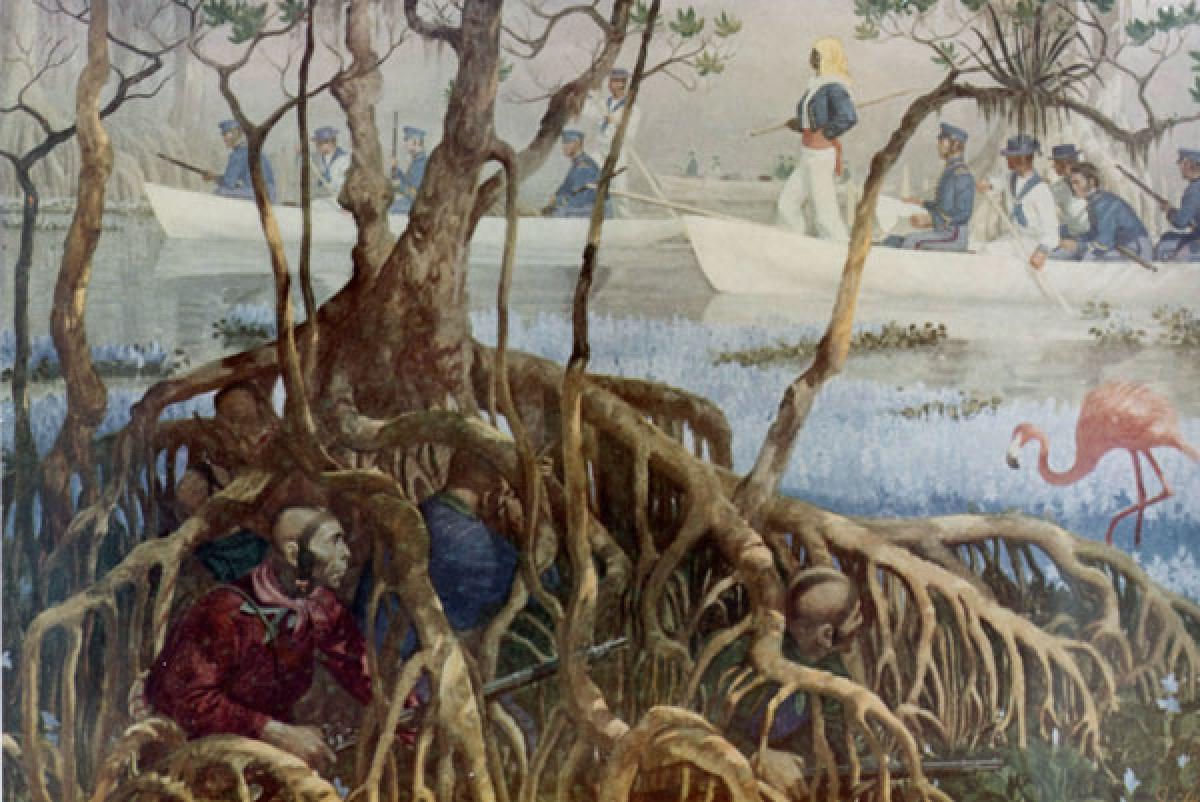In the decades leading up to the Civil War—often called the “Antebellum Period” by historians—a series of conflicts occurred known collectively as the Seminole Wars, which took place when the resident Americans Indians resisted the expansion of the white man into the newly acquired territory of Florida. The nature of this war (comparatively small and of less than noble purpose) has relegated it to obscurity in the national memory, but for the participants, it was a memorable experience, and for the Navy, it proved to be an effective training ground for future operations.
Although for the most part the Seminoles proved to be more elusive than lethal, a number of bloody clashes resulted in heavy casualties and one in which a Navy midshipmen led a force of five men in a courageous but ultimately unsuccessful counterattack against a much larger enemy force.
But for the Americans the environment proved to be a more formidable foe than they could have imagined. For them, penetration into the Seminole’s domain was akin to Hobbits venturing into the black forest of Mirkwood. Navigation alone was immensely difficult. Mangrove swamps obscured the true coastline, making it nearly impossible to distinguish gulf inlets from the rivers that provided access into the bewildering maze of the Everglades. Once in that verdant labyrinth, it was nearly impossible to calculate distances since the streams twisted about so frequently, often turning back on themselves. Because vegetation so thoroughly obscured the horizon, celestial observations were possible only by employing the less-reliable artificial-horizon method.
In this green hell, the vegetation was so dense that the sun’s rays—despite their intensity—rarely penetrated to the stagnant waters. The result was a thick, green slime that covered the surface, which was not only malevolent in appearance but gave off a noxious odor when disturbed, often causing men to retch. Saw grass lacerated the skin, temperatures sometimes reached 120 degrees Fahrenheit, and men often had to wade, pulling their boats through the shallows that dominated much of the area. On one expedition along the Kissimmee River, Passed Midshipman John Rodgers reported that in many places the surface of the river was covered “by floating grass and weeds, so strongly matted together that the men stood upon the mass and hauled the boats over it, as over shoals.”
In the end, the Seminole Wars proved costly. A great deal of national treasure had been expended, and more than 1,500 Americans had died—disease far outweighing the tally of 300 killed in action—yet a peace treaty was never signed, and about 600 Seminoles escaped mandatory removal to a Western reservation.
But the Navy’s forays into the Floridian waterways—often operating jointly with the Army—provided a great deal of experiential knowledge that would be put to good use in future operations. These were lessons hard-learned, but no less valuable because they helped the Navy evolve in its strategic and operational thinking. Before this conflict, commerce-raiding and coastal defense had dominated American naval thinking. The Seminole experience taught the Navy how to carry out offensive inland operations in coordination with the Army, lessons that would prove invaluable in the coming war with Mexico and even more so in the Civil War.



